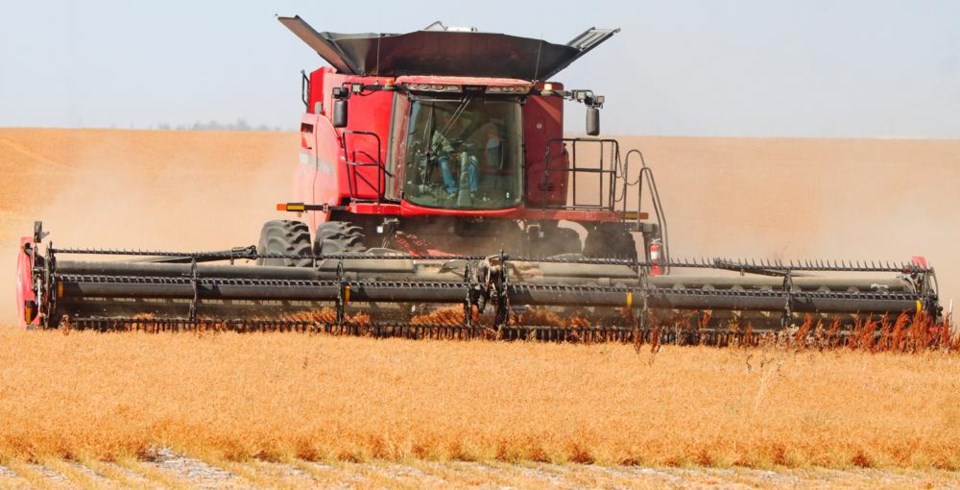Some producers are combining and others are desiccating pulse crops as harvest is well underway in southeast Saskatchewan, with about eight per cent combined and seven per cent swathed or ready to be straight-cut.
The five-year average for this time of year is two per cent of the crop combined, and three per cent swathed or ready for straight-cutting. Provincially harvest is seven per cent combined and six per cent ready for straight-cutting.
About 38 per cent of the fall rye, 48 per cent of winter wheat, 63 per cent of field peas, 15 per cent of barley and 35 per cent of the lentils are now in the bins.
Fillmore area farmer Russ Leguee said they have their peas, lentils, rye and winter wheat crops done, and he estimates they are about 30 per cent done their harvesting as of Sunday.
“We’re working on our spring wheat and swathing our canola. The yield is about 50 per cent of average on most crops. The quality is good on the pulse crops, and the heat has shrunk the kernels on the cereal crops, but overall they’re not too bad,” said Leguee.
Asked how much further ahead they are compared to most years, he estimated they are about 10 per cent ahead of the average, but added, “If the weather stays dry, harvest will progress very rapidly. Crops are drying down faster than we can get to them.”
Haying and baling is wrapping up in the region, and yields are lower than normal. Dry conditions have limited pasture growth in the southeast as well. Producers are busy hauling bales and desiccating crops.
Yields for alfalfa are 1.0 tonnes per acre; brome-alfalfa, 1.0; other tame hay, 0.85; wild hay, 0.8; and greenfeed, 1.7.
There were scattered rain showers throughout the region this week, ranging from a couple millimetres in to over an inch in some areas. The RM of Tecumseh had 1 mm, while Brokenshell recorded 8 mm, and the RM of Wellington had 14.5 mm, with the RM of Francis seeing amounts ranging from 10 to 27.5 mm, and the RM of Laurier ranging from 4 to 5 mm.
Moisture conditions improved slightly with the showers, with cropland topsoil moisture rated as 17 per cent adequate, 47 per cent short and 36 per cent very short.
Hay and pasture land topsoil moisture is rated as 10 per cent adequate, 45 per cent short and 45 per cent very short.
The majority of crop damage this week was due to wind, dry conditions and localized reports of hail. There were also reports of grasshoppers damaging crops.




